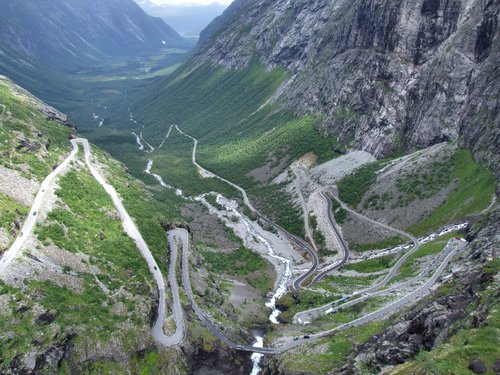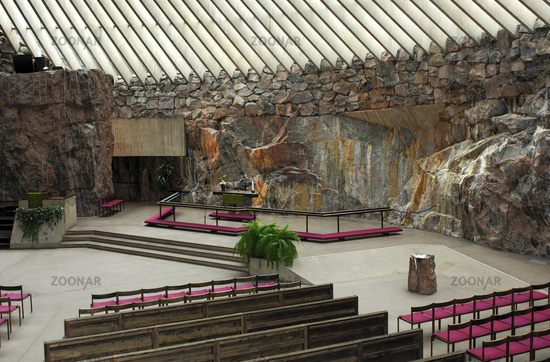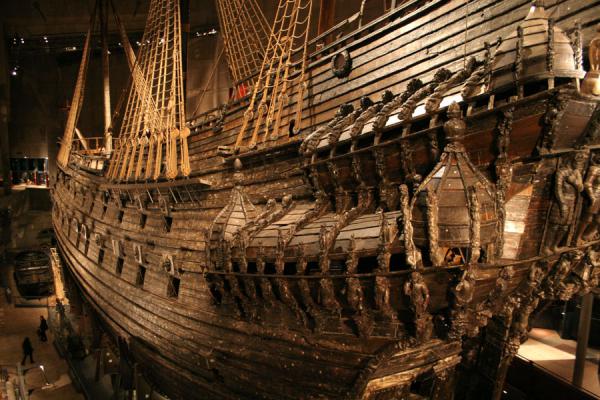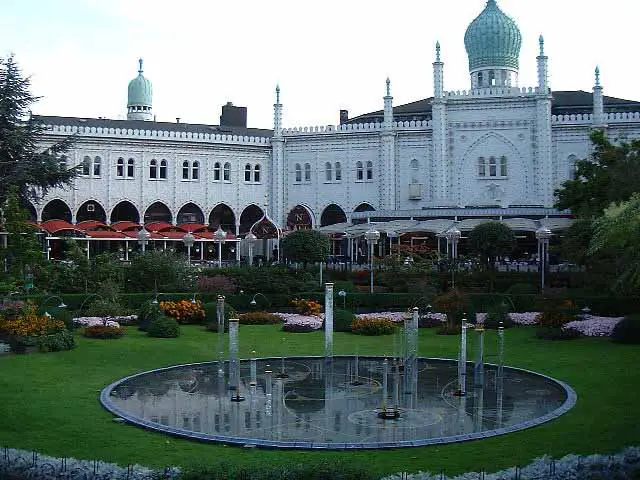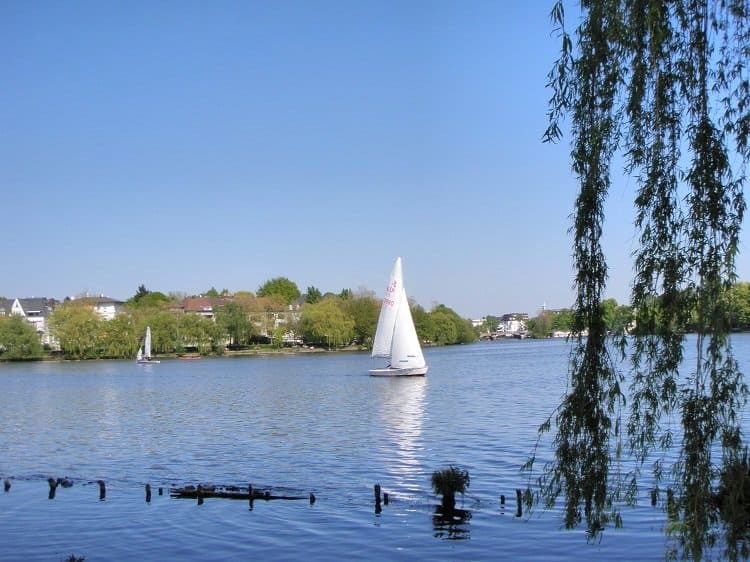Oslo is a very ancient city dating back to the 11th century and is situated on the Oslo Fiord. Today it is still growing – there is a lot of redevelopment happening plus they are building several thousand new apartments. Oslo is surrounded by 40 islands.
I did play tourist here as there is a lot to see and do. A visit to Holmenkollen National Ski Arena was very interesting – the actual ski jump is enormous and they do train all year round. It is also a training centre for cross country skiing and the biathlon. The facilities are first-class and it is a well used facility.
The Nobel awards are presented in the Oslo City Hall. The City Hall looks quite modern but in fact the building commenced in the 1930’s and was delayed during WW2 and was finally opened in the early 1950’s. I had not planned on going inside, but it did start to rain so I did go in. What a surprise! There is more than 20,000 square feet of murals on the walls. The murals celebrate Norwegian society – and they are so beautiful. So glad the rain came down!
There are at least 2 museums in Oslo that are a must see.
· The first is the ‘Kon-Tiki Museum’. The museum houses the original ‘Kon-Tiki’ raft and the reed boat ‘Ra 11’. When you see these crafts it is just so amazing that they sailed to the destinations they were. The museum is basically about the recreation of pre-historic voyages – well worth a visit.
· The second museum is ‘The Viking Ship Museum’ – this was an incredible place to visit as the Vikings were only around for a short period in history, but we do hear a lot about them. The museum has two 9th century Viking Ships. They are amazing to see and have been well preserved. One ship belonged to a Viking Queen and was found in a burial mound in 1904. They also uncovered a carriage and several sleds, plus many other items such as shoes, pieces of cloth, buckets, household items etc. The ships were all built of Oak.
I had heard about ‘The Vigeland Sculpture Park’ and was not really sure what to expect as I was told it was a place you either love or hate. I really enjoyed the visit – we had a good tour guide who explained very well the message the Sculpture Artist telling. The Park is one of the world's largest sculpture parks made by a single artist. The artist is Gustav Vigeland and this was his lifelong work. There are more than 200 sculptures in bronze, granite and wrought iron. Work on the park and the sculptures started in the late 1920’s and took over 40 years to complete with the assistance of other artists. Basically the artist tells the story of the ‘Circle of Life’.
Oslo has a new Opera House and the locals are comparing to the Sydney Opera House as both are built by the water. They are very different and the one in Oslo is meant to resemble an iceberg melting into the water – and yes, you can see what the architects are trying to achieve. I went back on my own after the tour and walked up the sloping walls to the roof area and the view was amazing. The inside is stunning with a lot of wood on the inside. They have used a lot of Italian marble both indoors and outdoors – makes me wonder how much marble if left in Italy?
The Oslo Folk Museum was also a good place to visit. It is huge and you could easily spend a whole day here. I went there with the tour group and we only saw a very small portion of the centre. We did see the section about how the Norwegian National Costumes have developed over the years and why they are all different. Each region has its own version of a national costume and the Norwegian Saami’s have a similar national costume to the Sammi’s in Finland and Sweden. We did manage to visit some of the old buildings that have been relocated here. These did include a very old Stave Church.
This article does sound a bit like a travelogue – but Oslo is a wonderful place to visit.
I did mention that during the past 3 weeks I have been with a tour group. During those 3 weeks we travelled from Copenhagen to Stockholm. We then went onto Helsinki and then North Cape in Norway and finally to Oslo. All up we travelled 5993 km’s – not a bad trip!!
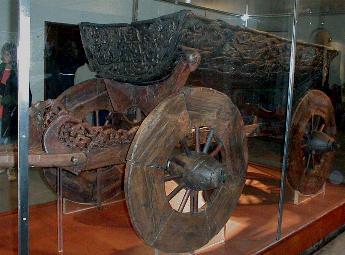 |
| A carriage found in a Viking Queen's burial ship. |
 |
| The new Oslo Opera House - meant to resemble an iceberg melting into the sea. |
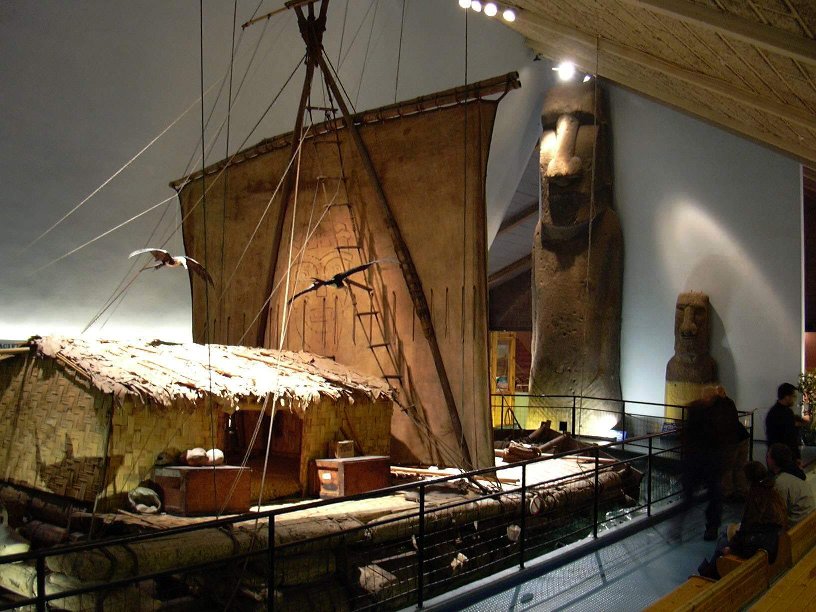 |
| The Kon-Tiki raft - the original. |

